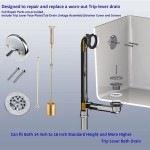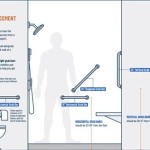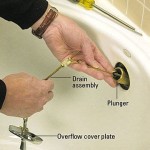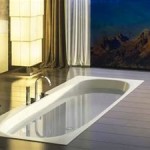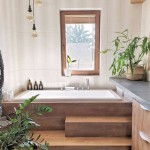Small Bathtub to Shower Conversion Pictures: A Visual Guide to Space Optimization
Converting a small bathtub into a shower is a common bathroom renovation project, particularly in older homes or apartments where space is limited. This transformation can significantly improve the functionality and accessibility of the bathroom, creating a more streamlined and modern aesthetic. Visual examples, often found in small bathtub to shower conversion pictures, are invaluable for understanding the possibilities and making informed decisions about design and execution. This article explores various aspects of small bathtub to shower conversions, highlighting key considerations and offering insights gleaned from available visual resources.
The primary motivations for such conversions typically revolve around accessibility, space utilization, and aesthetic preferences. Bathtubs can be challenging to enter and exit, especially for individuals with mobility limitations. Showers offer a more accessible alternative, reducing the risk of falls and promoting independent living. Furthermore, replacing a bulky bathtub with a sleek shower enclosure can visually expand a small bathroom, making it feel more spacious and open. Finally, a shower conversion provides an opportunity to update the bathroom's style, replacing outdated fixtures and finishes with contemporary designs.
Space-Saving Shower Designs
When dealing with a small bathroom, maximizing space is paramount. Small bathtub to shower conversion pictures often showcase innovative designs that effectively utilize the available area. One popular option is a corner shower, which fits neatly into the corner of the bathroom, minimizing its footprint. These showers can be enclosed with glass doors or a simple shower curtain, depending on the desired level of enclosure and the overall aesthetic. Another space-saving design is a walk-in shower with a low threshold or no threshold at all. These showers eliminate the need for a shower door, further contributing to a sense of openness. However, careful planning is necessary to ensure proper drainage and prevent water from escaping the shower area.
Visual examples frequently demonstrate the use of strategically placed shelving or niches within the shower enclosure to provide ample storage for toiletries. Recessed shelving units are particularly effective, as they do not protrude into the shower space and maintain a clean, uncluttered look. Floating shelves, mounted directly to the shower wall, can also offer convenient storage while adding a touch of modern design. The choice of showerhead can also impact the perception of space. A rainfall showerhead, mounted directly overhead, can create a luxurious showering experience without taking up valuable wall space. Conversely, a handheld showerhead offers greater flexibility and control, but may require additional mounting hardware.
Careful consideration should be given to the dimensions of the shower enclosure. While it's tempting to create the largest possible shower, it's crucial to leave adequate space for movement within the bathroom. A shower that is too large can make the bathroom feel cramped and difficult to navigate. Small bathtub to shower conversion pictures often illustrate the importance of maintaining a balance between shower size and overall bathroom flow. The placement of the shower drain is also critical. The drain should be located in a low spot within the shower floor to ensure efficient water drainage and prevent pooling. The slope of the shower floor should be carefully calculated to direct water towards the drain.
Tile Selection and Visual Impact
Tile selection plays a significant role in the overall aesthetic of a shower conversion. Small bathtub to shower conversion pictures highlight the diverse range of tile options available, each offering a unique visual impact. Large format tiles, for example, can create a sense of spaciousness and minimize grout lines, resulting in a cleaner, more modern look. Subway tiles, a classic choice, offer a timeless appeal and can be arranged in various patterns to add visual interest. Mosaic tiles, with their intricate designs, can be used to create accent walls or decorative borders, adding a touch of personality to the shower enclosure.
The color and texture of the tiles can also profoundly affect the bathroom's ambiance. Light-colored tiles, such as white or beige, can brighten up a small bathroom and make it feel larger. Dark-colored tiles, on the other hand, can create a more dramatic and intimate atmosphere. Textured tiles can add depth and visual interest, but they may also be more difficult to clean. The grout color is another important consideration. A grout color that contrasts with the tile color can accentuate the tile pattern, while a grout color that matches the tile color can create a more seamless and cohesive look.
Visual examples often showcase the use of glass tiles, which reflect light and create a sense of openness. Glass tiles can be used as an accent or to cover the entire shower wall. However, glass tiles can be more expensive than other types of tiles and may require professional installation. The choice of tile material should also be based on its durability and water resistance. Ceramic and porcelain tiles are both excellent choices for showers, as they are highly durable, waterproof, and easy to clean. Natural stone tiles, such as marble or granite, can add a touch of luxury to the shower, but they require more maintenance and may be more susceptible to staining.
Plumbing and Fixture Considerations
Converting a bathtub to a shower typically involves modifying the plumbing to accommodate the new shower fixtures. Small bathtub to shower conversion pictures often provide glimpses of the plumbing modifications required, although the details are usually hidden behind the finished walls. The existing water supply lines and drainpipe need to be reconfigured to connect to the showerhead, faucet, and shower drain. In some cases, it may be necessary to relocate the water supply lines or drainpipe, which can add to the complexity and cost of the project.
The choice of shower fixtures, including the showerhead, faucet, and shower valve, can significantly impact the showering experience. Low-flow showerheads can conserve water without sacrificing water pressure, helping to reduce water bills. Thermostatic shower valves maintain a consistent water temperature, preventing sudden temperature fluctuations. Handheld showerheads offer greater flexibility and control, allowing users to direct the water flow to specific areas of the body. The finish of the shower fixtures should complement the overall bathroom decor. Chrome and brushed nickel are popular choices, as they are durable, easy to clean, and resistant to corrosion.
The shower drain should be properly sized to handle the water flow from the showerhead. A clogged drain can lead to water pooling in the shower, which can be both inconvenient and unsanitary. The shower drain should also be equipped with a hair strainer to prevent hair and other debris from clogging the drainpipe. Visual examples often show the use of linear drains, which are long, narrow drains that run along the edge of the shower floor. Linear drains are particularly effective at draining water from large showers and can also add a modern touch to the shower design. The placement of the shower valve is also important. The valve should be easily accessible from both inside and outside the shower, allowing users to turn the water on and off before stepping into the shower.
Furthermore, the shower's ventilation system should be adequate to prevent moisture buildup and mold growth. A properly functioning exhaust fan is essential for removing excess moisture from the air. The exhaust fan should be sized appropriately for the size of the bathroom and should be vented to the outside. Small bathtub to shower conversion pictures sometimes show the placement of the exhaust fan, which is typically located near the shower area. In addition to an exhaust fan, a window in the bathroom can also provide natural ventilation. However, if there is no window in the bathroom, it is even more important to have a properly functioning exhaust fan.
In conclusion, converting a small bathtub to a shower is a multifaceted project that requires careful planning and execution. By studying small bathtub to shower conversion pictures, homeowners can gain valuable insights into space-saving designs, tile selection, and plumbing considerations. These visual resources provide a wealth of inspiration and practical information, helping homeowners to create a more functional, accessible, and aesthetically pleasing bathroom.
Bathtub Remodeling Aging In Place Tub To Shower Conversions Degnan Design Build Remodel

Benefits Of A Tub To Shower Conversion Boston Somerville

5 Ideas Bathtub To Shower Conversion Structura Remodeling

Sweeten Bathtub To Shower Conversions That Add Style Space

7 Things To Consider Before Your Bathtub Shower Conversion Boss Design Center

Sweeten Bathtub To Shower Conversions That Add Style Space

Tub Into Shower Conversion For Maximum Space And Style

What To Know About Tub Shower Conversion Bathroom Remodel Degnan Design Build

Tub To Shower Conversion Ideas Wize Home Direct

Hoffman Estates Il Tub To Shower Conversion 2024 Veteran Owned Local Contractor

